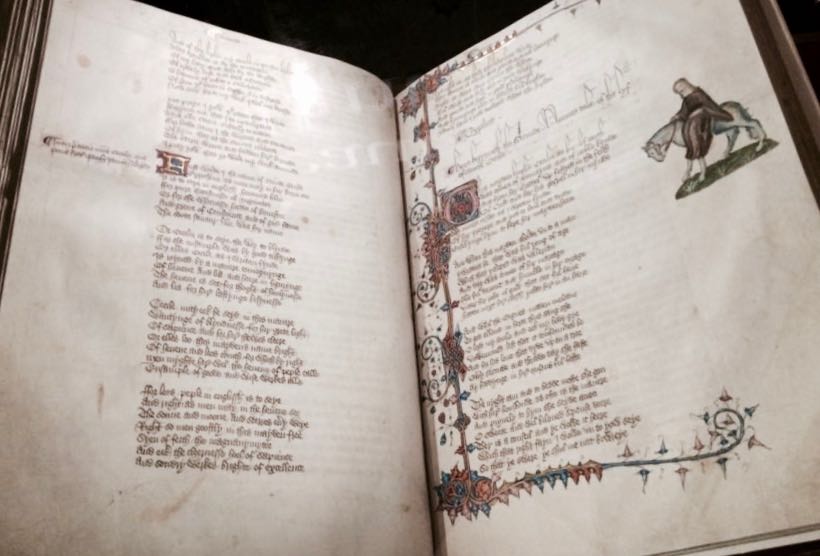
This year marks the 20th anniversary of the celebration of the first St. Fiona Day back in 1997. St. Fiona lived in Ireland during the 10th century. She is best known for popularizing the constellation Orion in song and verse. Following her untimely death at the age of 23, she was canonized and became the patron saint of drunkards, poets and stargazers. She is celebrated on April 1.
It was previously thought that all the songs she had written had been destroyed following her death, but Professor Charlotte Gaskell recently uncovered one song that she has attributed to St. Fiona. Gaskell is the world’s preeminent expert on St. Fiona. She unearthed the song when going through artifacts related to the life of the Pope who was responsible for Fiona’s canonization. The man had met Fiona in his youth, and Gaskell had hoped to glean information about the mysterious saint by studying his effects. In her search, Gaskell came across an unusual scrap of paper with a few lines of verse in a scrawl that did not match any of the other writing in the collection. The small piece had been tucked inside an illuminated manuscript that belonged to the Pope. On the back of the scrap was a note in a different hand that simply said, “Fiona O.” The writing matched that of the Pope, and Gaskell was able to date the scrap back to the time that Fiona was thought to be alive.
Gaskell had quite a task deciphering the text as it turned out to be written in code. As Gaskell explains:
Given the risk Fiona took in writing in secret, it is understandable that she would resort to code to protect her work. But what’s curious about this is that there is no indication that her destroyed work was written in code. The existence of this coded piece of verse makes me think there may be more out there waiting to be discovered. This is truly a remarkable find for Fiona scholars and enthusiasts.
No sooner had Gaskell broken the code than she had all the confirmation she needed that she was in fact looking at original work by Fiona O’Shniggy. It was all there in the subject matter. The short bit of verse was about Fiona’s beloved constellation, Orion.
Fiona was known for her love of studying the heavens. In her mind, each point of life represented a person who had died. Of the few accounts we have of her life, we know that she would point to a particular star and tell someone that it represented someone she had lost. Gaskell theorizes that this is what led to her strong connection to stargazing. It was her attempt to connect to the stories of the past, and, in way, her ideas that the stars represented the past preceded human understanding that the light from stars really comes from years ago.
Up until this point, scholars have relied on the limited writings of others for a glimpse into the life of this remarkable saint. Now, this scrap of paper allows Fiona herself to speak through the shadows of history, and we are hearing her voice for the first time in hundreds of years.
Here, for the first time in English, are the words of the beloved saint:
Curious hunter in the night,
Always hungry for the fight.
Laid to rest amongst many a star.
Will life find me there?
Nestled in the quilt of light up in the air?
Though I wander, you are not far.
Up in the sky is where I look,
The words I write could fill a book.
Unfortunately that is where it ends. Gaskell is unsure of whether this is incomplete work by Fiona or if he rest of the poem was lost to time. It is Gaskell’s hope that she will find more writing. Until then, let St. Fiona inspire you to have a drink, look at the stars and write a poem.
As Kurt Vonnegut once wrote, “All persons, living and dead, are purely coincidental.” St. Fiona herself was born out of coincidence: the retelling of a bad joke about the constellation Orion, late night discussion between two friends and vivid imaginations. By chance, these things combined in the perfect moment to give birth to St. Fiona. As with people like Kilgore Trout, Thursday Next and Charlotte Gaskell, St. Fiona exists in the world of fiction, but don’t tell her that. She thinks she is quite real, thank you very much!
